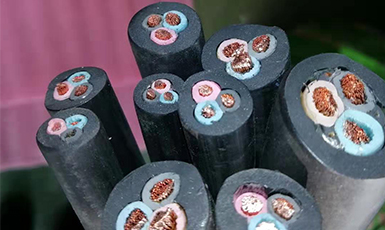
Search method of cable fault point:
1. Low-voltage pulse method (pulse method for short)
When the line input a pulse wave, along the road pulse propagation speed V, when the distance line Lx encountered the fault point after reflection back input, round-trip time T V wave propagation speed line, line parameters, it is a fixed value in each line, can be calculated and DFDL age cable fault tester. The transmitted pulse of the pulse source and the reflected wave of the line fault point are displayed in real time. The clock signal provided by the instrument can measure the time T.
The fault distance can be easily measured through low resistance grounding fault, short circuit fault and broken wire fault. For high-resistance faults, the reflected wave is not obvious or even reflected due to the high impedance under the action of low-voltage pulse. In this case, it is necessary to add a certain dc voltage or impact voltage to make it discharge, and use flashover arc to form a transient short circuit to generate wave reflection.
2. Direct high-voltage flashover method (direct flashover method for short)
When the fault resistance of the cable is very high and a stable resistance channel has not been formed, a gradually increasing dc voltage can be applied to the cable under test. When the voltage reaches a certain value, it is better to click through the fault to form a flashover. Flashover arc is used to form short-circuit reflection to the applied voltage, and the reflected echo forms open-circuit reflection at the input end through the high-impedance source. This voltage will be reflected several times between the input and the point of failure until the energy is exhausted.
3. Impact high pressure flashover method (flashover method for short)
When the fault resistance of the cable is reduced and a stable resistance channel is formed, the dc high voltage cannot be increased due to the limitation of equipment capacity. The impulse voltage test should be carried out at this time. Dc high voltage charges the cable through the ball gap until the breakdown, and still USES the flashover arc formed by its short-circuit reflection. At the cable input end, add the measuring inductance L to read the echo. The principle circuit is shown in figure 4. The wave is short-circuited through the fault point and reflected from the input end L, forming multiple reflections in the process. Due to the self-inductance of inductor L and the blocking effect of L, open circuit reflection began to appear, and with the increase of the current, short-circuit reflection occurred after a certain time. The whole circuit is composed of capacitor C and inductor L, which is another l-c discharge process. Thus, the waveform process presented at the input end of the line is a cosine curve, with almost attenuation superimposed on the multiple reflections of the fast pulse. The distance of the fault can be obtained from the interval of the reflected waves.

Enterprise qr code

Website qr code